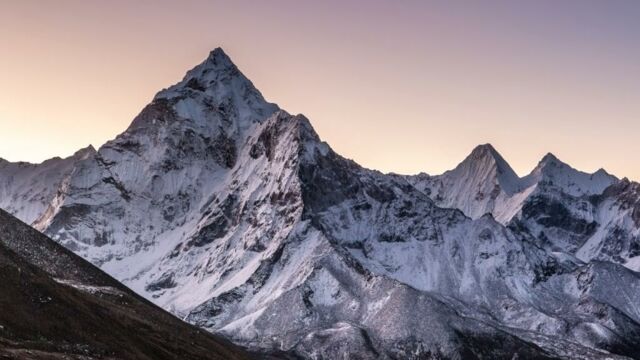This is the gruesome truth about Mount Everest that climbers don't want you to know about

Located in the Himalayas, Everest is the world's highest mountain. It culminates at 8849 meters. But in addition to its sheer size, there are a number of other reasons for its fascination.
Climbing Mount Everest is the challenge of a lifetime for mountaineering enthusiasts. It has to be said that climbing over 8000 metres, braving cold and avalanches, is no walk in the park. But one of the reasons Everest holds such fascination outside the sphere of aficionados is for the stories that surround it. Stories to make your blood run cold.
Discover our latest podcast
Famous fates
XXL size, eternal snow, the 'Roof of the World', as it's nicknamed, fascinates. But what has also contributed to its reputation are the strange visions that many climbers report. Witnesses to the tragic fates of some, several corpses punctuate the route to the summit. These chilling images serve as a stark reminder that climbing Everest is dangerous and not recommended for novices.
More under this adMore under this adAs a result, many of the corpses are found close to the most traveled paths, unknowingly serving as visual landmarks before the final ascent. Some corpses enjoy a strange 15 minutes of fame, like that of Tsewang Paljor, known as Green Boots, located near a cave; or the remains, now displaced, of Francys Arsentiev, Everest's 'Sleeping Beauty', the first woman to climb Everest without an oxygen tank.
Dangers of altitude
Whether you're climbing Everest or not, the dangers of altitude are numerous. One of the ailments from which climbers can suffer is acute mountain sickness. It generally occurs at altitudes of over 2,000 metres. Oxygen depletion leads to headaches, nausea and dizziness, and in more serious cases to pulmonary or cerebral edema, leading to death.
More under this adMore under this adAs for sub-zero temperatures, they can lead to hypoxia, a deterioration in bodily functions that can also result in death. Avalanches are another frequent hazard. Because of the extreme conditions, these bodies, mummified by the cold, cannot be brought down: they are condemned to remain where they are, just as they were on the day they disappeared.
Over 200 dead bodies lay along the route to the top of Mount Everest. The bodies are used as landmarks by climbers and have been given nicknames such as "Green Boots". pic.twitter.com/eIHbwnVydt
— Morbid Knowledge (@Morbidful) June 2, 2023
Read more:
⋙ Gruesome discovery near the Sussexes' home
⋙ 'She is our hero': Fearless dog saves a family seconds before mountain lion attack
⋙ There's a disturbing detail about this cute 'climbing bear cub' video
This article has been translated from Gentside FR.
Sources used:
National Library of Medicine: Mortality on Mount Everest, 1921-2006: descriptive study
Wikipedia: Green Boots
Wikipedia: Francys Arsentiev